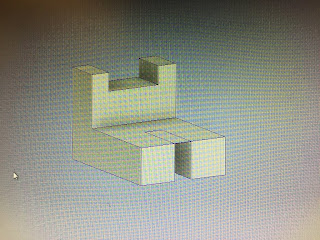Activity 9.1, 9.2
Design Ethics
Design Ethics
Intro to Engineering
Allen Sam
7-17-18
Activity 9.1 Product Life cycles
Conclusion
1. What
is meant by product lifecycle?
2. Why
is it important for companies who make products to research and determine a
product’s potential lifecycle?
3. What
would you change about your product? Why?
4. Do
you think your product will evolve or become obsolete over time? Why?
5. What
is a trade-off?
6. Do
you think that trade-offs were made during the design phase of your product?
7. Why
is it important to recycle?
8. How
do product designers play a role in recycling?
9. What
role does society play in the recycling effort?
10. What can
you do to help?
To recycle, I could try reusing old products and craft new products out of them or Taking cardboard to a recycling company.
Activity 9.2 Design Ethics
Topic Chosen: Media Ethics
Specific topic: PRIVATE INFORMATION BEING USED FOR ADVERTISING!? (clickbait headline)
Research:
-the argument versus social media companies and their consumers is that they were not told their private information was being used for advertisement
-private info is used to determine what consumers want
-Trust between consumers and media platforms is lost.
-accuracy of information presented in headlines is lost. This is also known as "fake news"
https://www.liebertpub.com/doi/abs/10.1089/cyber.2012.033
https://www.compukol.com/social-media-ethics-and-etiquette/
Client:
|
Facebook Company
|
Designer:
|
Allen Sam
|
Problem Statement:
|
It has come to the attention of the owners of
Facebook that they need to ensure that the Terms of Privacy is followed and more clearly inform their consumers of the ethics of advertising.
|
Design Statement:
|
Research the aspects of a case study within the ethical
category of Technology and Biotechnology. In particular, review a case study
regarding stem cell research and the related ethical issues and codes of
conduct. Document all research using proper APA Style citations. Record the
ethics or codes that were misused and the results of the case. Design and
create either a CD cover, book cover, or poster that depicts the findings of
the research.
|
Constraints:
|
1.
Use reputable research sources, in particular
those on the Internet ending with either .gov, .edu, or .org.
|
2.
Create a Design Brief: three-day research,
design, and creation time limit.
|
|
3.
Use ethical practices in the creation of your
model.
|
|
4.
Complete the Design Brief: three-day research,
design, and create time limit.
|
Conclusion
1. What
is ethics?
2. What
actions are considered cheating?
3. What
are your rights and responsibilities as a potential engineer?
As a potential engineer, I have the right to use modeling programs and the right to claim an idea that I created, but at the same time it is my responsibility to ensure that anything that I create is annotated and published as MY work, not someone else's. Also, it is a responsibility not to copy someone else's ideas.



Comments